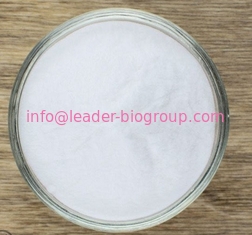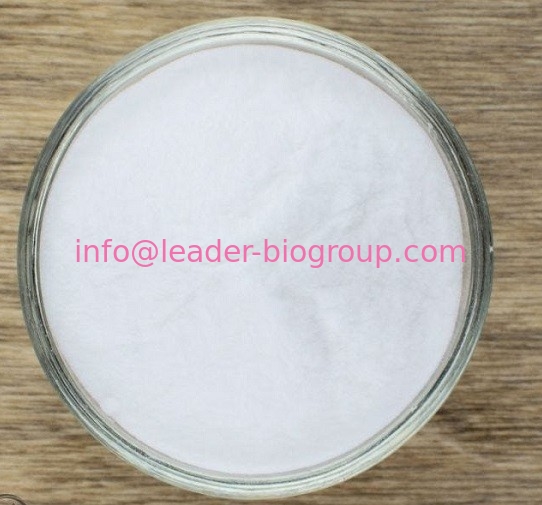| |
| Calcium Propionate Chemical Properties |
| Melting point |
300 °C |
| storage temp. |
Store below +30°C. |
| solubility |
water: soluble1g/10 mL, clear, colorless |
| form |
Crystals or Crystalline Powder |
| color |
White |
| PH |
9.2 (200g/l, H2O, 20℃)(IUCLID) |
| Water Solubility |
1 g/10 mL |
| Merck |
14,1698 |
| BRN |
3698682 |
| Stability: |
Stable. Hygroscopic. Incompatible with strong oxidizing agents. |
| InChIKey |
BCZXFFBUYPCTSJ-UHFFFAOYSA-L |
| CAS DataBase Reference |
4075-81-4(CAS DataBase Reference) |
| EPA Substance Registry System |
Calcium propionate (4075-81-4) |
| |
| Calcium Propionate Usage And Synthesis |
| Description |
Calcium propionate, also known as calcium salt and propanoic acid is a white powder that has a faint smell. The compound is stable at room temperature. It is hygroscopic and incompatible with strong oxidizing agents. It has a melting point of 300oC and a pH value of 7 to 9. It is slightly soluble in alcohol and fully soluble in water.
Calcium Propionate as the newer food antifungal agent, is the calcium salt of propanoic acid which is a antifungal agent. It appears as white crystalline or powder, odorless or having slight specific odor of propionic acid, stable under light and heat , hygroscopic, soluble in water while aqueous solution is alkaline, slightly soluble in methanol and ethanol, not soluble in benzene and . It is deliquescent in moist air and loses crystal water when heated to 120 ℃ .It changes phase at 200~210 ℃ and decomposes to calcium carbonate at 330~340 ℃ . Under acidic conditions, it generates free propanoic acid which is weaker than sorbic acid while stronger than acetic acid, and has an antibacterial effect on Aspergillus niger and gas bacillus rather than yeast . Calcium Propionate is a normal intermediate product of animal metabolism and is safe eaten by animals. It has a broad antibacterial activity to mold bacteria and yeast bacteria, inhibiting the propagation of microorganisms, preventing feed molding, which can be used as a fungicide on food and feed and a preservative for bread and pastries. As a feed additive ,it can effectively prevent feed molding and prolong shelf life of feed . If combined with other inorganic complexes, it can also improve the appetite of livestock, increase milk production in cows, and its dosage is less than 0.3% of the combined feed (use propionic acid to count). |
| Food preservative |
Calcium Propionate is an acid-type food preservative, with its inhibitory effected by the environmental pH .When PH5.0 minimum inhibitory concentration is 0.01%, PH6.5 is 0.5%. In the acidic medium ,it has a strong inhibitory effect on the various types of fungi, aerobic bacillus or gram-negative bacilli . It has a specific effect on preventing the production of Aflatoxin streptozotocin, but has little effect on the yeast. In the food industry, it is mainly used in vinegar, soy sauce, bread, cakes and soy products,whose maximum usage (use propionic acid to count, the same below)is 2.5g/kg; while the largest usage in the wet dough products is 0.25g/kg . Also ,it can be used for feed antifungal agent.
It is used for breads, pastries and cheese preservatives and feed fungicide. Calcium Propionate as a food preservative, calcium propionate is mainly used for bread, because sodium propionate keeps pH of bread rising, delays the fermentation of the dough; sodium propionate is more widely used for cake, because the pastry gets bulky by using leavening agent, there is no problem about yeast development caused by tincrease in the pH . As a feed preservative, sodium propionate is better than calcium propionate. But Calcium Propionate is more stable than sodium propionate. In food industry , except uses for bread, pastries, cheese, Calcium Propionate can also be used for preventing soy sauce from getting moldy which inhibits the refermentation . In medicine, Calcium Propionate can be made into powders, solutions and ointments to treat skin disease caused by parasitic fungi. Ointment (liquid) contains 12.3% sodium propionate, while a powder contains15% Calcium Propionate. |
| Preparation |
Calcium propionate is produced by reacting calcium hydroxide with propionic acid. |
| Mechanism of Action |
Calcium propionate suppresses mold and bacteria growth on bread and cakes, but does not inhibit yeast. However, its addition to bread does not interfere with the fermentation of yeast. Calcium ion affects the chemical leaving action, therefore is not usually utilized in cake. Since it can enrich bread and rolls, it is normally used in their production. |
| Uses |
In Food
During dough preparation, calcium propionate is added with other ingredients as a preservative and nutritional supplement in food production such as bread, processed meat, other baked goods, dairy products, and whey.
Calcium propionate is mostly effective below pH 5.5, which is relatively equal to the pH required in the dough preparation to effectively control mold. Calcium propionate can assist in lowering the levels of sodium in bread.
Calcium propionate can be used as an browning agent in processed vegetables and fruits.
Other chemicals that can be used as alternatives to calcium propionate is sodium propionate.
In Beverage
Calcium propionate is used in preventing the growth of microorganisms in beverages.
In Pharmaceuticals
Calcium propionate powder is utilized as an anti-microbial agent.it is also used in retarding mold in key aloe vera holistic therapy for treating numerous infections. Large concentrations of aloe vera liquid that is normally added to feel pellets cannot be made without using calcium propionate to inhibit mold growth on the product.
In Agriculture
Calcium propionate is used as a food supplement and in preventing milk fever in cows. The compound can also be used in poultry feed, animal feed, for instance cattle and dog food. It is also used as a pesticide.
In Cosmetics
Calcium propionate E282 inhibit or prevent bacterial growth, therefore protect cosmetic products from spoilage. The material is also used in controlling the pH of personal care and cosmetic products.
Industrial Uses
Calcium propionate is used in paint and coating additives. It is also used as plating and surface treating agents.
In Photography
Calcium propionate is used in making photo chemicals and photographic supplies. |
| Regulatory Amount |
FAO/WHO (1984): Processed cheese 3000mg/kg (alone or in combination with propionic acid, sorbic acid and its salts ).
Japan (use propionic acid to count): 2.5g/kg ( the product 3.15g).It is mainly used for bread and pastry. 1.0g calcium salt (monohydrate) equals 0.790g propanoic acid ). The excess of amount will prevent the growth of yeast in the bread, which damages the flavor. It can be used to prevent growth of Aspergillus niger (Asp.Niger), aerobic spore-forming bacteria (B.Subtilis) .
USDA, 9CFR, §318.7 (2000): flour products, 0.32% (use wheat flour amount to count, alone or togr with the amount of sodium propionate).
USDA§381.147 (1994): The new pie dough 3% (use wheat flour amount to count).
Calcium salt is generally used in bread while sodium salt is used in West Point .Alkalinity resulting from the use of sodium causes the delaying of the dough fermentation but use of calcium can strengthen the role of calcium. If calcium salt is used in West Point, then it can react to the sodium bicarbonate in the leavening agent, producing insoluble calcium carbonate, which reduces the amount of CO2 generated,so sodium salt is mainly used . |
| Description |
Calcium propanoate or calcium propionate has the formula Ca(C2H5COO)2. It is the calcium salt of propanoic acid. |
| Chemical Properties |
white powder(s) or monoclinic crystal(s); uses: mold-retardant additive for bread, tobacco, pharmaceuticals, antifungal agent [HAW93] |
| Uses |
Calcium Propionate is the salt of propionic acid which functions as a preservative. it is effective against mold, has limited activity against bacteria, and no activity against yeast. it is soluble in water with a solubility of 49 g/100 ml of water at 0°c and insoluble in alcohol. it is less soluble than sodium propionate. its optimum effectiveness is up to ph 5.0 and it has reduced action above ph 6.0. it is used in bakery products, breads, and pizza crust to protect against mold and “rope.” it is also used in cold-pack cheese food and pie fillings. typical usage level is 0.2–0.3% and 0.1–0.4% based on flour weight. |
| Uses |
As a food additive, it is listed as E number 282 in the Codex Alimentarius. Calcium propanoate is used as a preservative in a wide variety of products, including but not limited to bread, other baked goods, processed meat, whey, and other dairy products. In agriculture, it is used, amongst other things, to prevent milk fever in cows and as a feed supplement Propanoates prevent microbes from producing the energy they need, like benzoates do. However, unlike benzoates, propanoates do not require an acidic environment.
Calcium propanoate is used in bakery products as a mold inhibitor, typically at 0.1- 0.4 % (though animal feed may contain up to 1 % ) .
When propanoic acid is infused directly into rodents' brains, it produces reversible behavior changes (e.g. hyperactivity, dystonia, social impairment, perseveration ) and brain changes (e.g. innate neuroinflammation, glutathione depletion) that may be used as a model of human autism in rats.
According to the Pesticide Action Network North America, calcium propionate is slightly toxic . This rating is not uncommon for food products; vitamin C is also rated by the same standards as being slightly toxic . Calcium propanoate can be used as a fungicide on fruit. |
| Uses |
Calcium propionate is the most widely used antimycotic in breadmaking. It is often utilized at about 0.2%, flour basis; higher concentrations lead to flavor problems and begin to inhibit yeast fermentation. |
| Safety Profile |
Moderately toxic by ingestion. When heated to decomposition it emits acrid smoke and irritating fumes. |
| Purification Methods |
Crystallise this antifungal salt from water (2mL/g) by partial evaporation in a desiccator. [Beilstein 2 H 238, 2 II 218, 2 III 516.] |
| |
| Calcium Propionate Preparation Products And Raw materials |
|

